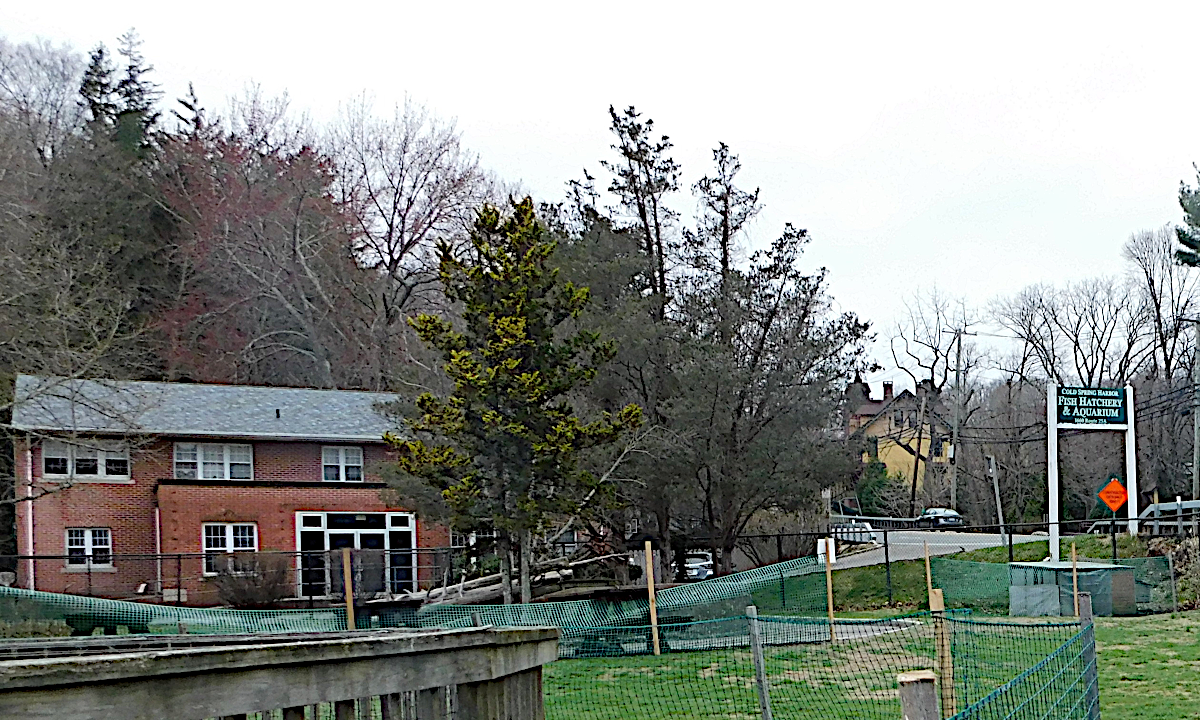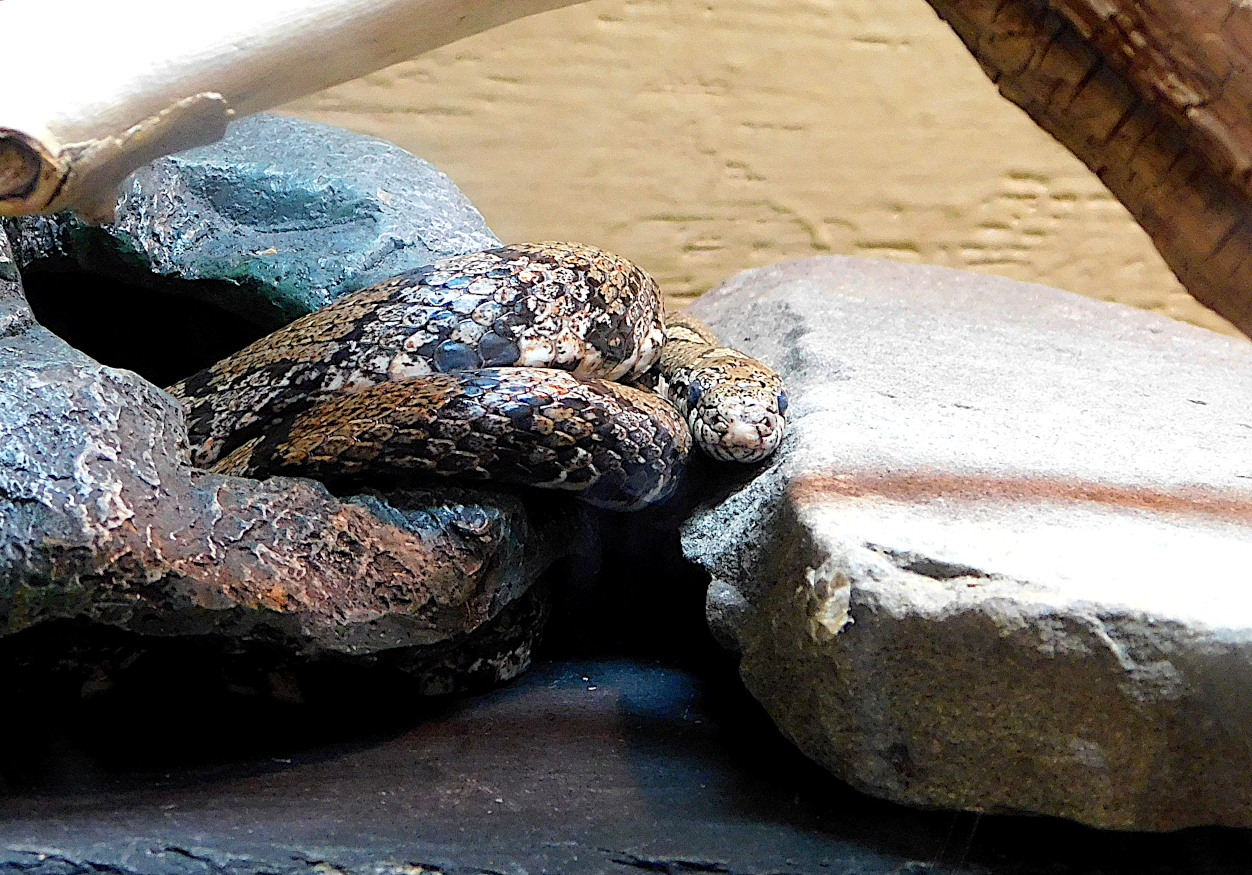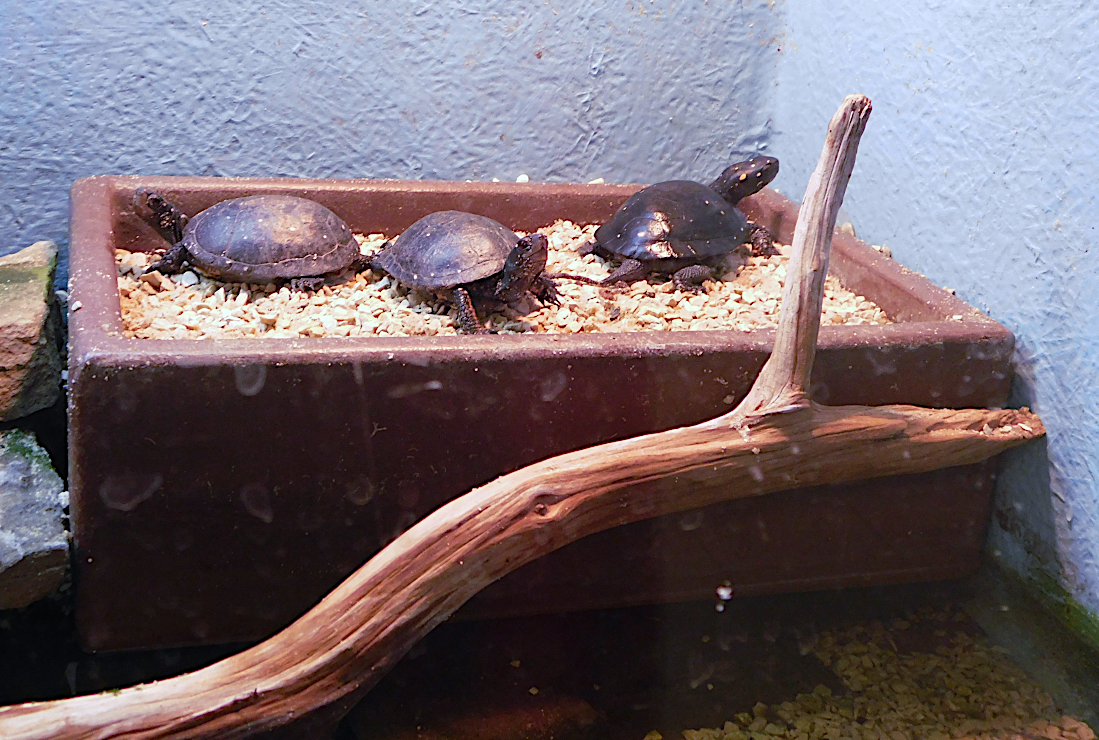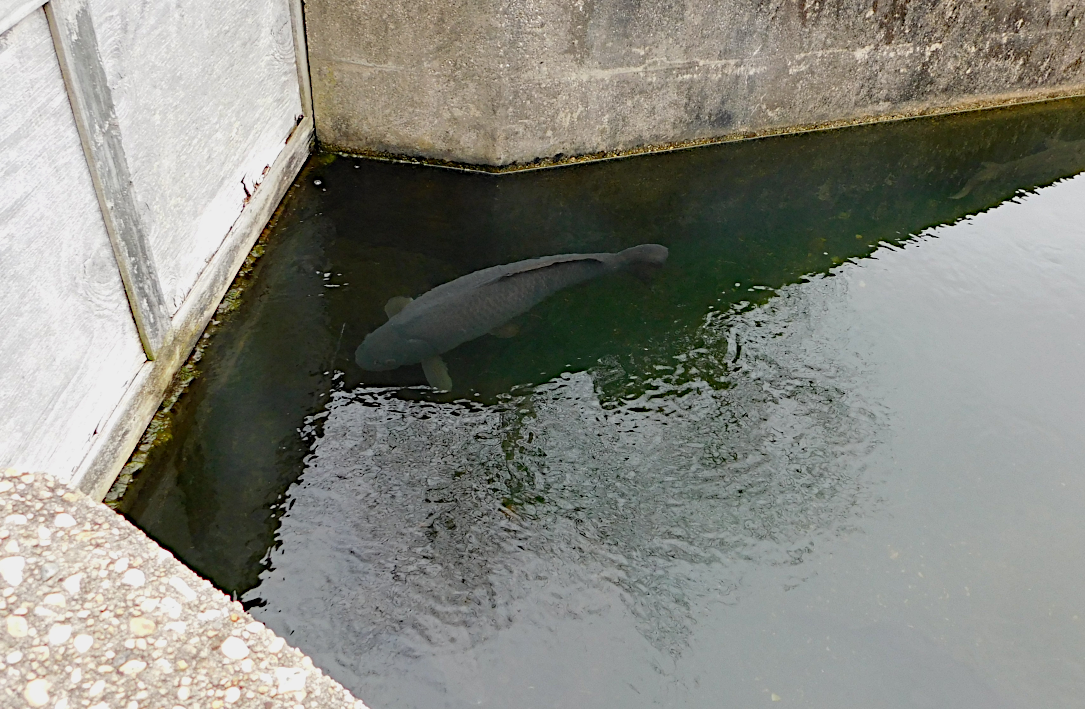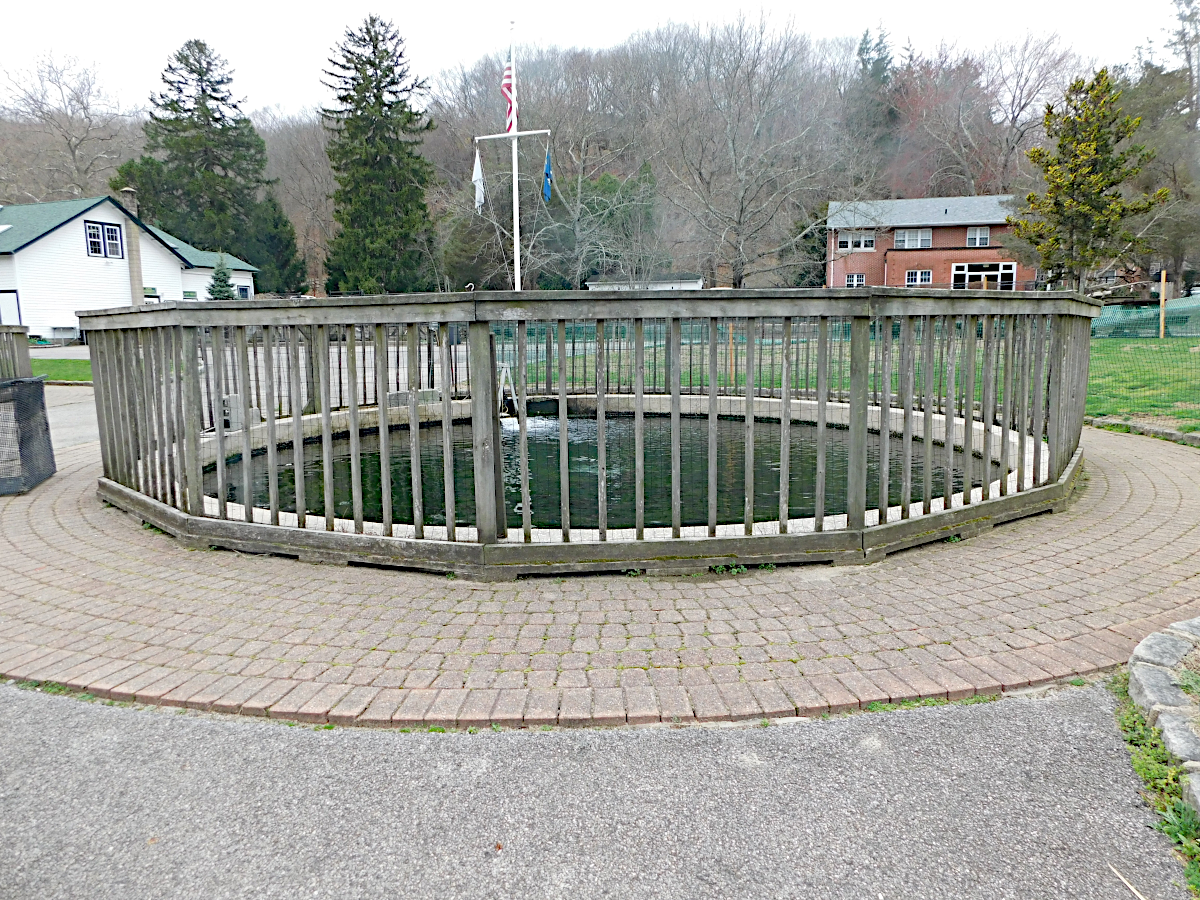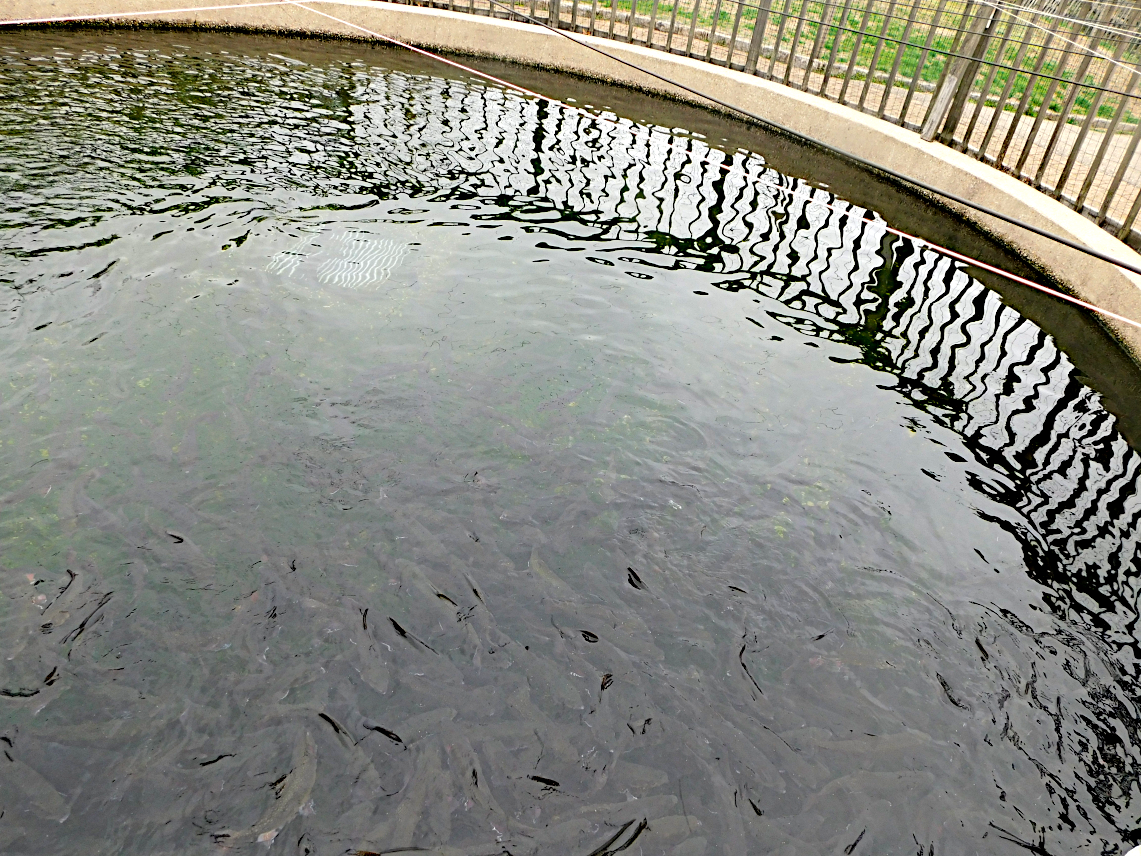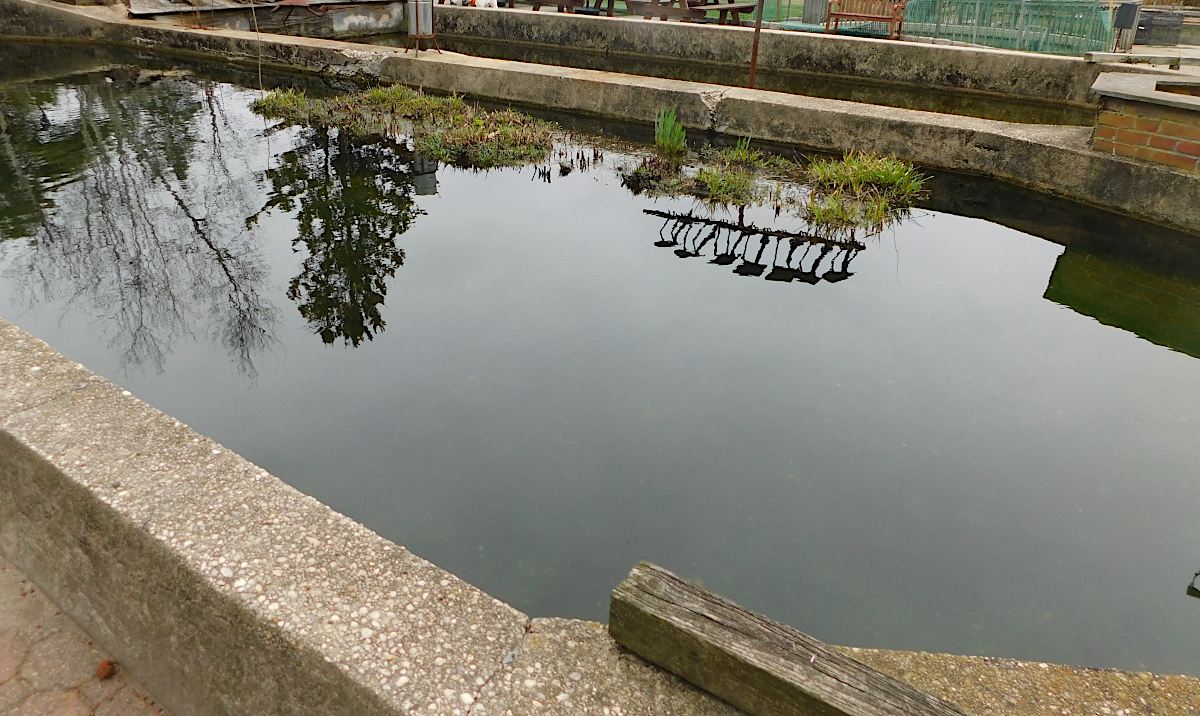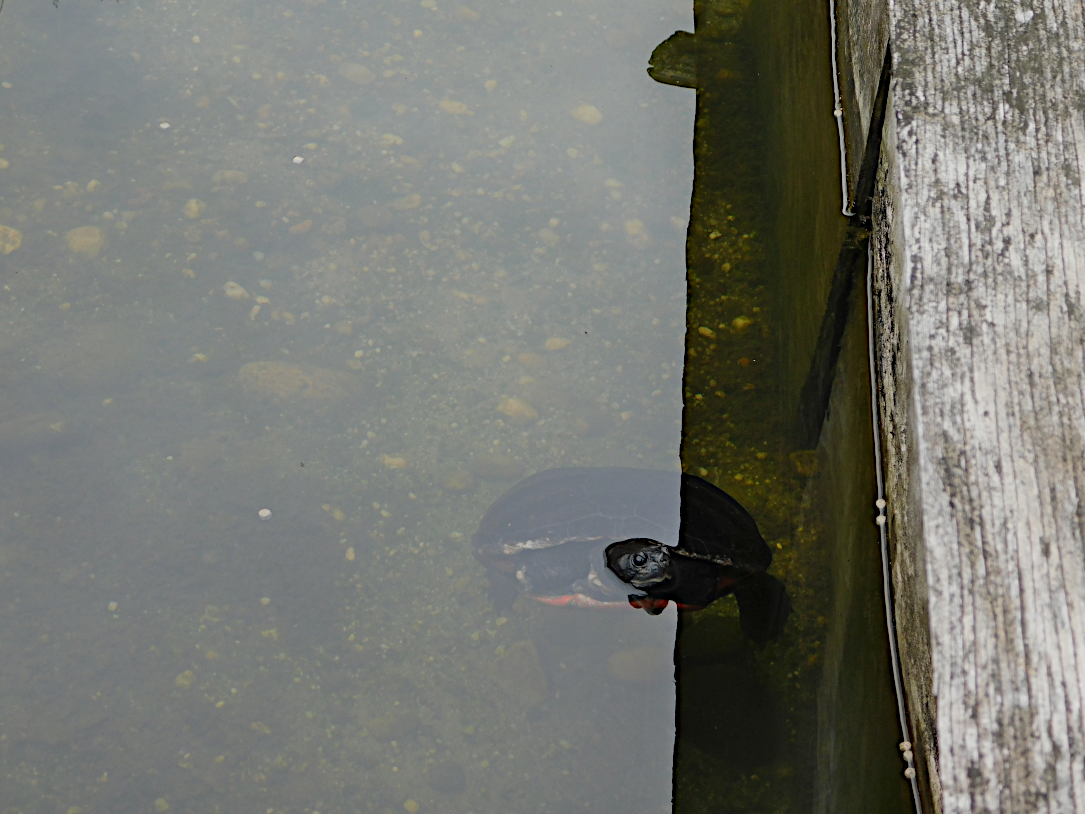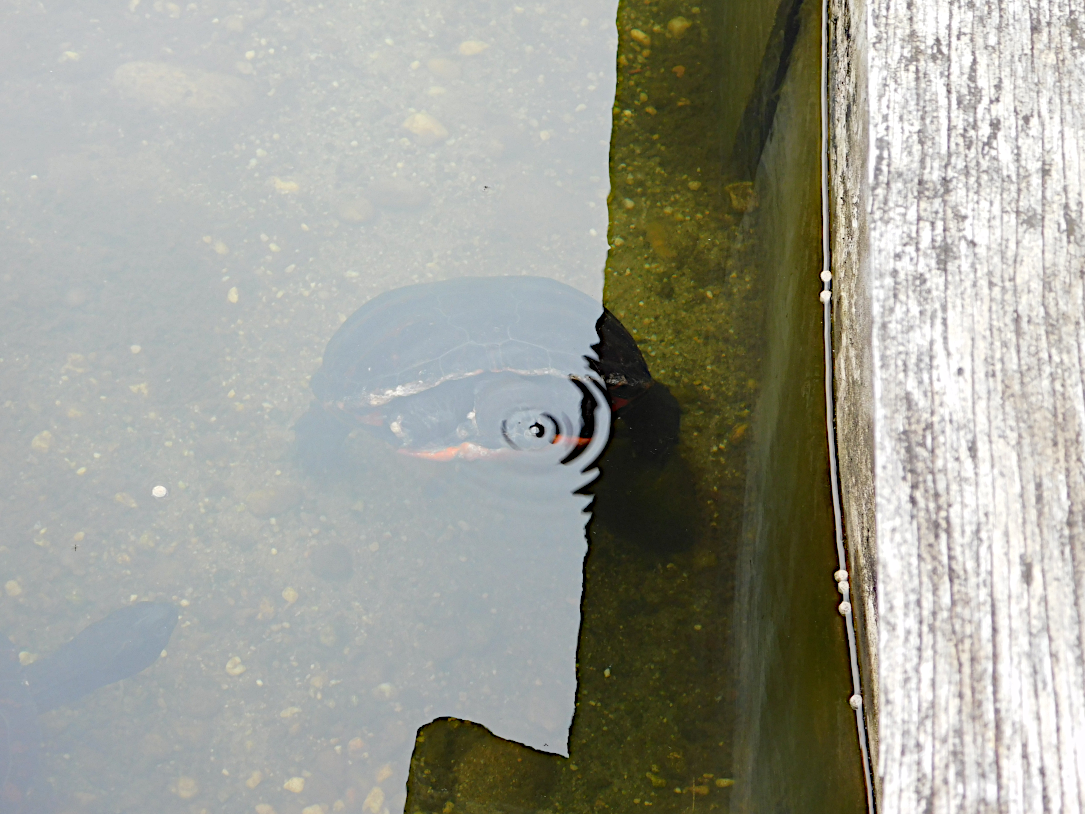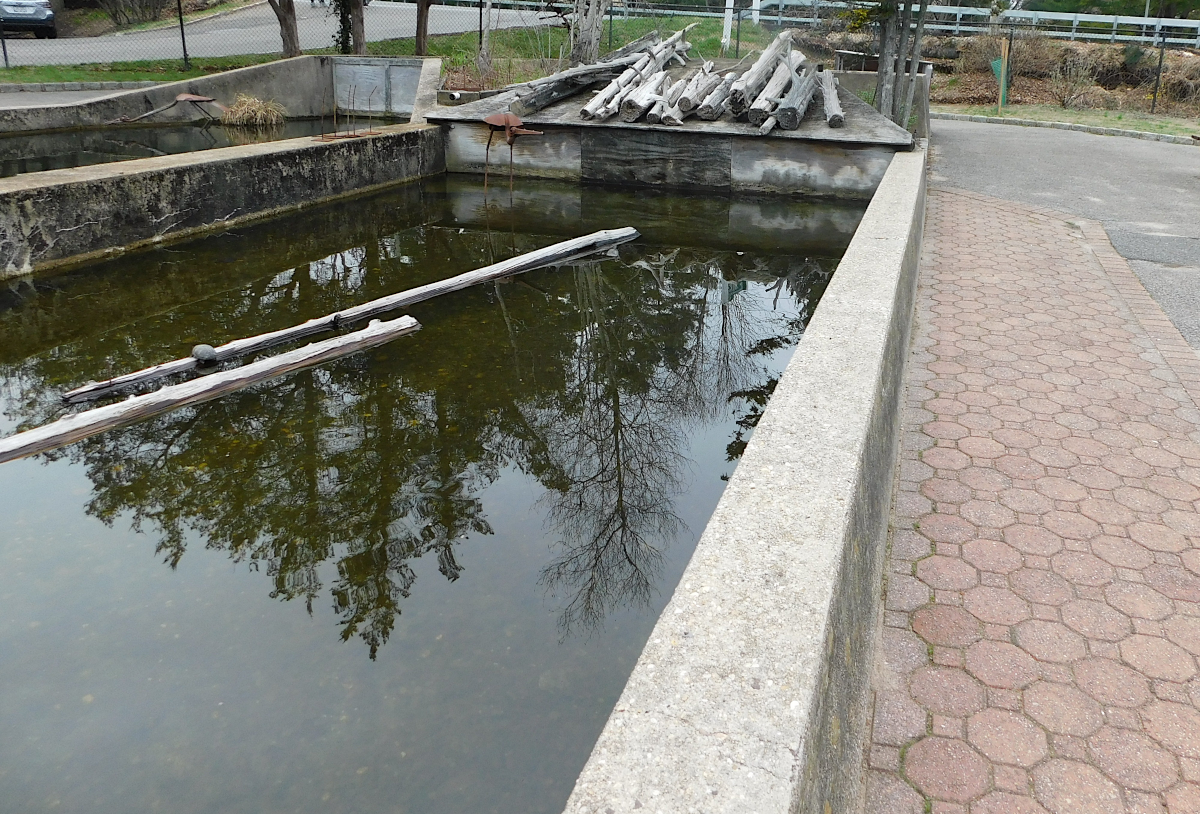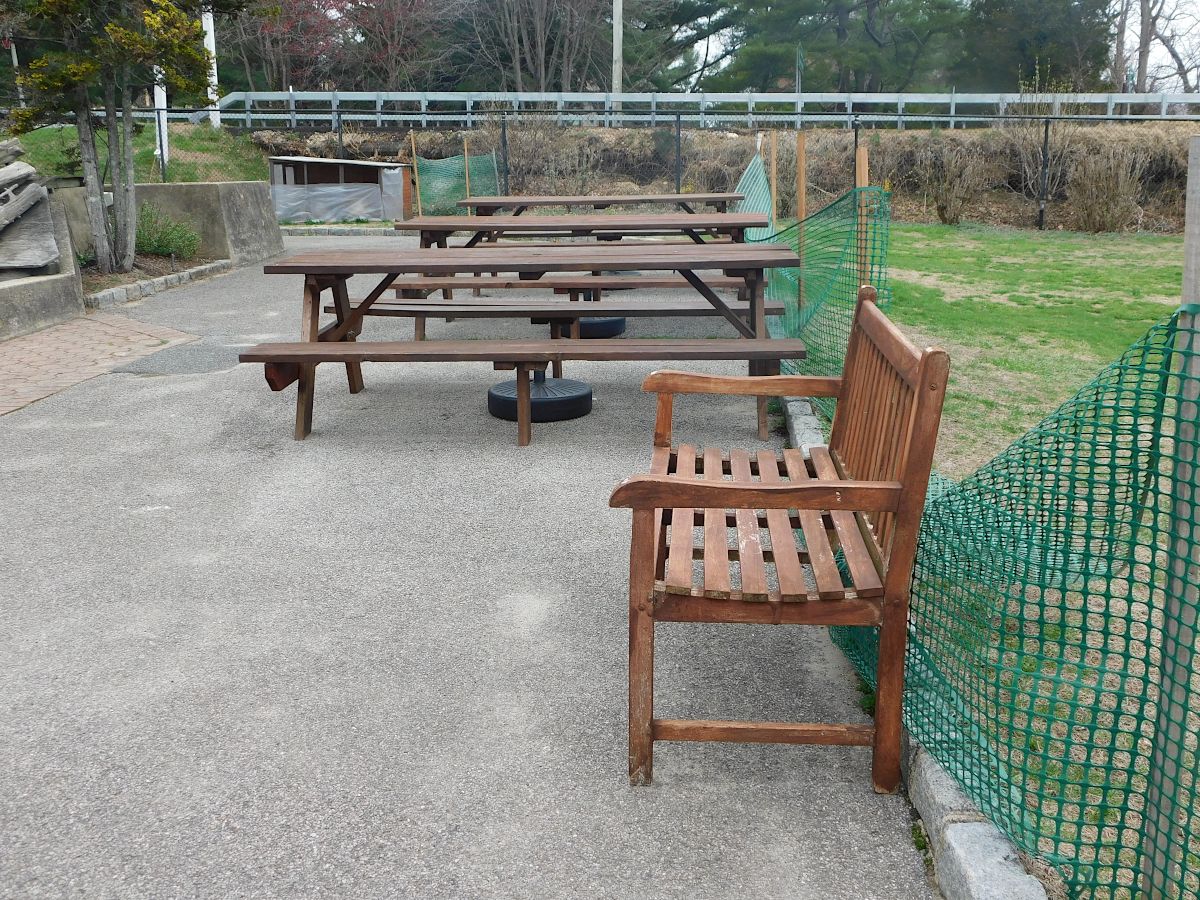Black Rat Snake on Display at the Cold Spring Harbor Fish Hatchery.
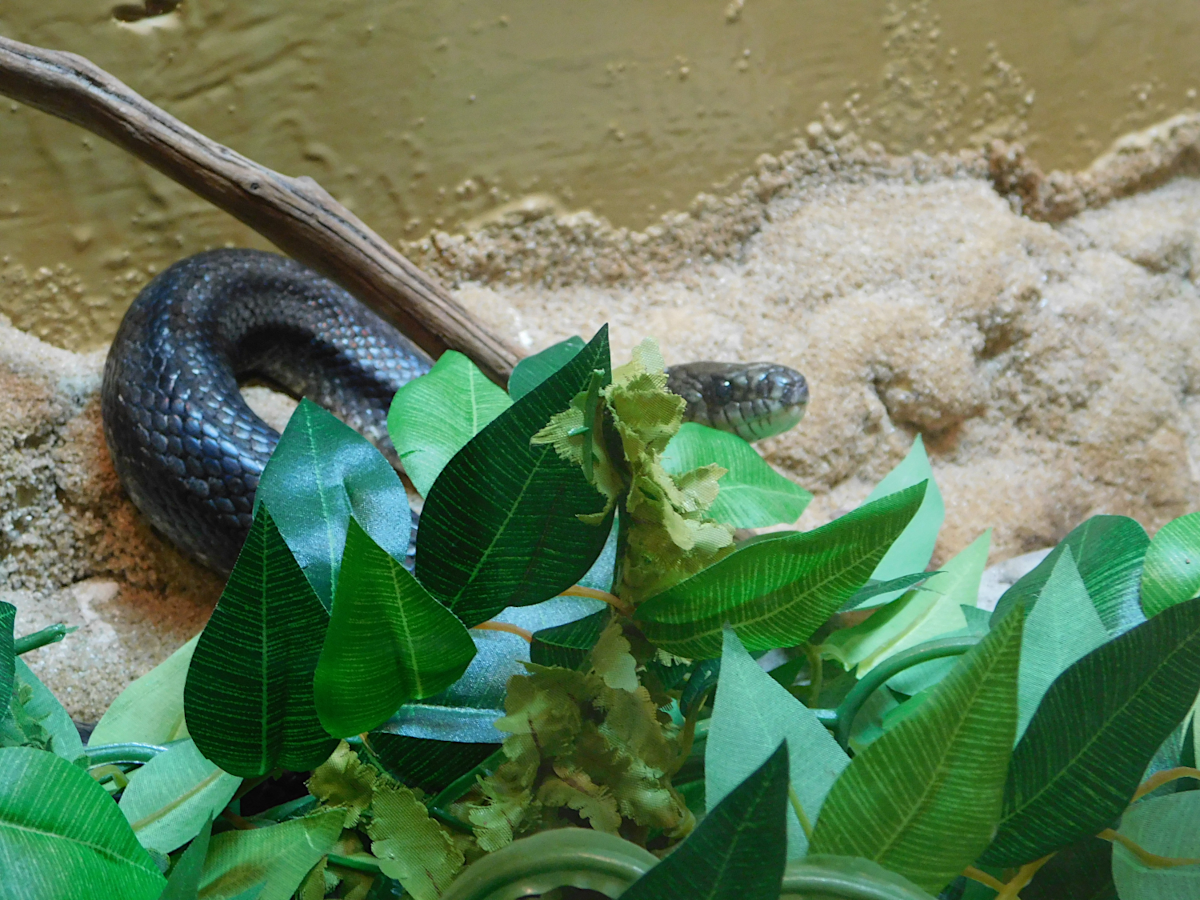
This past Sunday I went to the Cold Spring Harbor Fish Hatchery, which is located on the North Shore of Long Island, NY. I went to the hatchery with my daughter but couldn't stay as long as I wanted because she had to leave. I got some pretty good pictures, though. I'll go back another time to snap the ones I missed. Maybe I'll have a second blog with those pictures.
We could see the sign for the hatchery as we drove east on Route 25A, toward Cold Spring Harbor. I'd been to the hatchery many times with my children when they were young, so I knew what to look for as we neared. It's easy to miss the entrance because it's at the bottom of a curvy hill.
Here's the way the sign looks from inside the hatchery.
The Cold Spring Harbor Fish Hatchery was
established in 1883 by New York State. It served as a resource for trout breeding. People could use fish from the hatchery to stock their trout ponds.
Here is an early picture of the hatchery (from Wikimedia Commons).
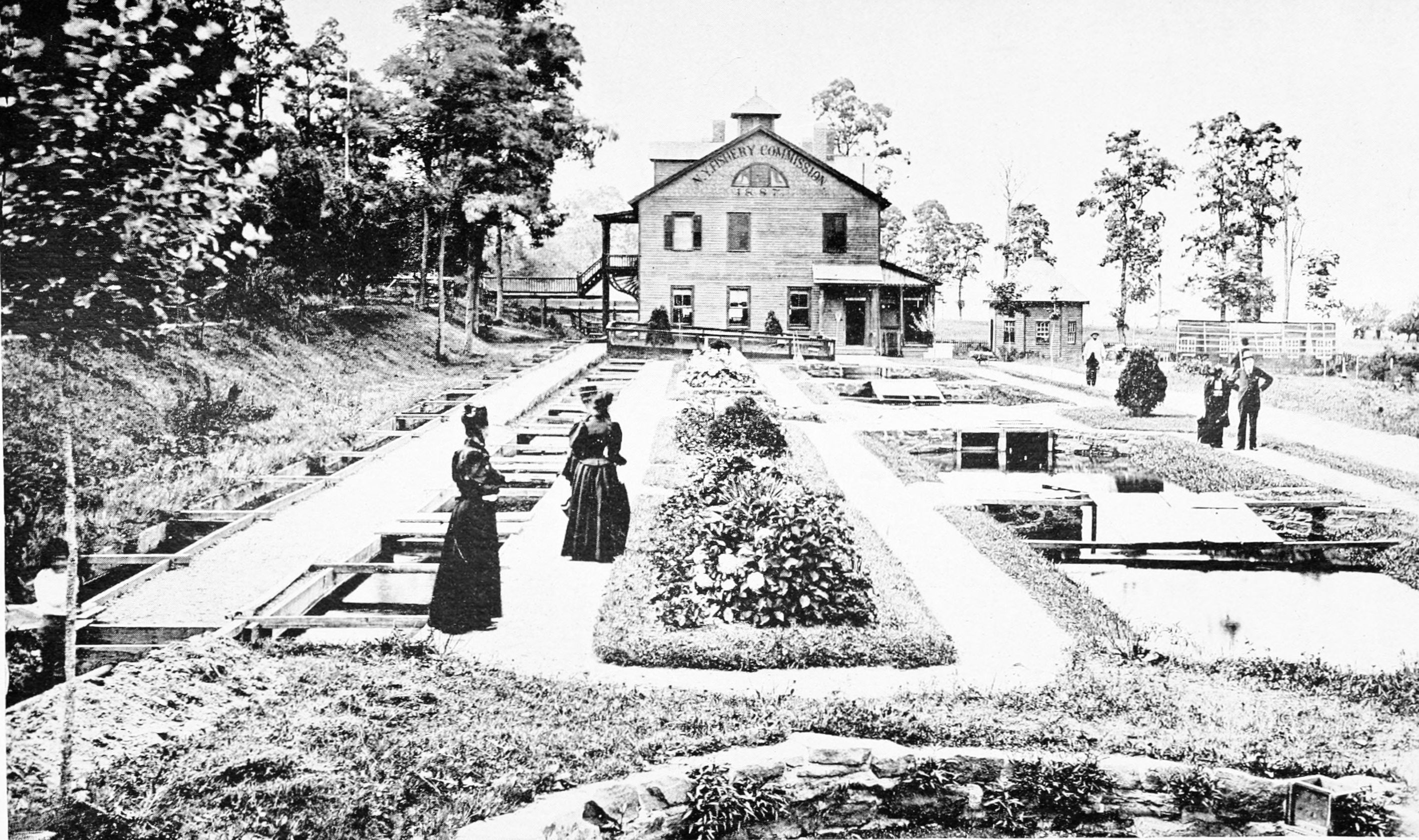 Popular Science Magazine, 1895. Caption reads: "Fish rearing and breeding ponds at Cold Spring Harbor"
Popular Science Magazine, 1895. Caption reads: "Fish rearing and breeding ponds at Cold Spring Harbor" 
In 1982, almost a hundred years later, the hatchery was taken over by a nonprofit foundation and today is run as a public service and education center.
In addition to the breeding ponds, there is a building dedicated to live specimens, amphibians and reptiles. The hatchery
claims to have "the largest living collection of native reptiles and amphibians in New York State." The black rat snake picture (at the top of my blog) was shot in that building.
The black rat snake can be quite long. The estimated size of the snake varied depending on the site I consulted but the consensus seems to be that an adult can be as
long as eight feet. The one in the cage was surely not that long, but here is a shot that shows more of its body.
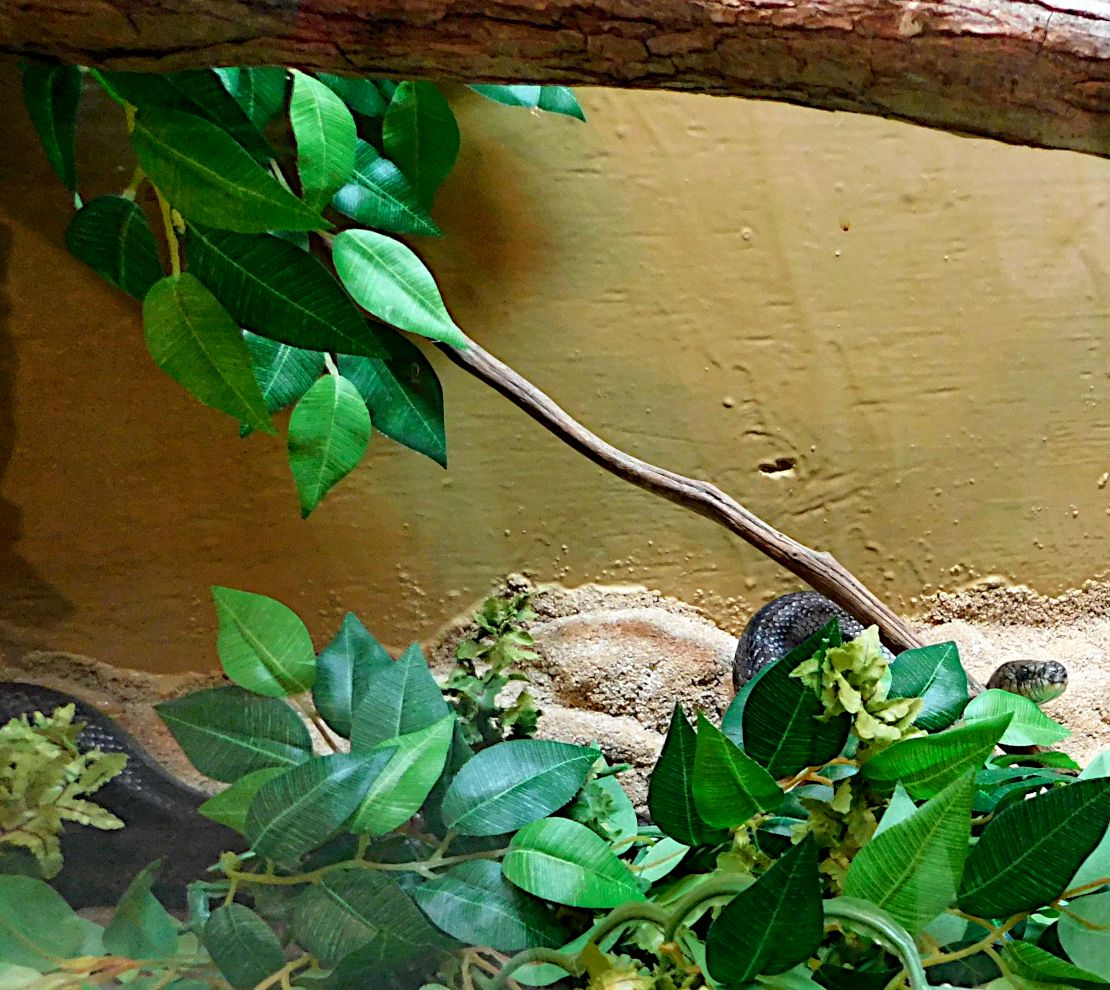
The snake is nonvenomous and kills by constriction. Its diets seems to be small animals, such as voles. These snakes are considered an important part of the New York State ecosystem because they help to keep rodents in control. The sites I consulted claim the black rat snake is not dangerous to humans, but if I see an eight foot constricting snake, I'm going in the other direction. Notice that in the picture at the top of the page the snake is looking straight at me!
The pictures of the rat snake are fairly clear. Many pictures I took of different animals didn't come out well at all. The animals were all behind glass and many had special light and heating elements. Here is a picture of an eastern milksnake that came out relatively well. Notice how the snake is camouflaged by the rock it is sitting in. This snake was also looking at me!
The eastern milksnake found in the northeast tends to be brownish, as is the one in my picture. Further west in the U.S. they tend to be redder in hue. They are nonvenomous, and also kill by constriction. They are not as long as the black rat snake, growing to a maximum of four feet. However, they are nocturnal and shy so are not likely to be seen. (Info from
New York Almanack (sic)).
That's all the pictures of snakes I am able to publish. There were more on display but I couldn't get them, and one I did get, of a garter snake was so blurry I can't publish it.
There were other creatures, though. Here are some Blanding's turtles.
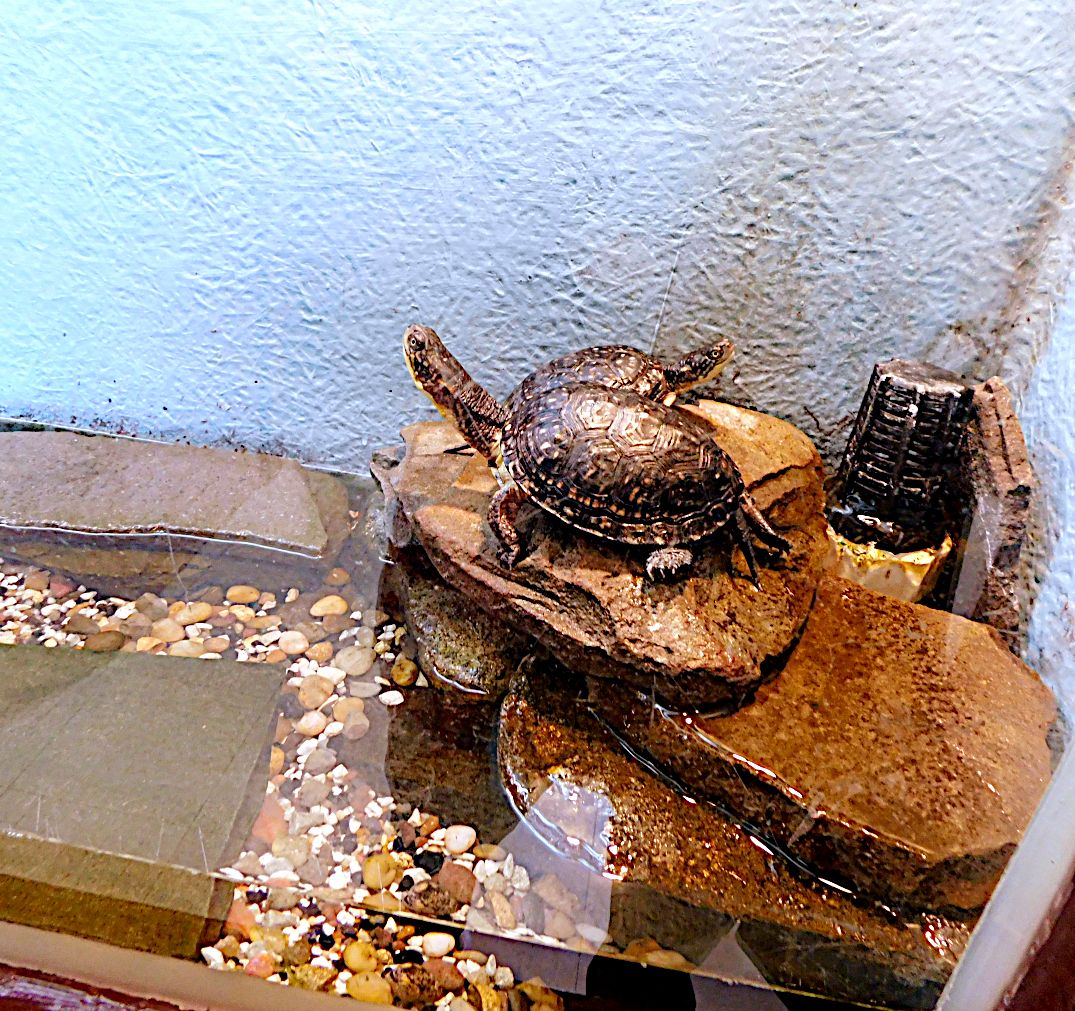
These turtles spend a lot of time under water. If startled, they can stay underwater for hours. They have a long lifespan, and have been known to live as long as 83 years. They don't breed until they are at least 18, and then may have clutches that average 10. They are often killed in road accidents. "Loss of adult females by vehicle strikes is likely the most significant cause of population declines across the species' range". (Info from
NY state gov).
I snapped pictures of the turtles in the picture below as I walked in the door of the exhibit hall, but I didn't not see a sign identifying them. Can't identify them myself, except to say they weren't in water and weren't kept under special heat lights.
I did get a shot of an interesting fellow, a toad. Identified as the American toad, this creature was kept in a specially lit enclosure. The shot came out very rosy colored but I managed to tone it down for posting.
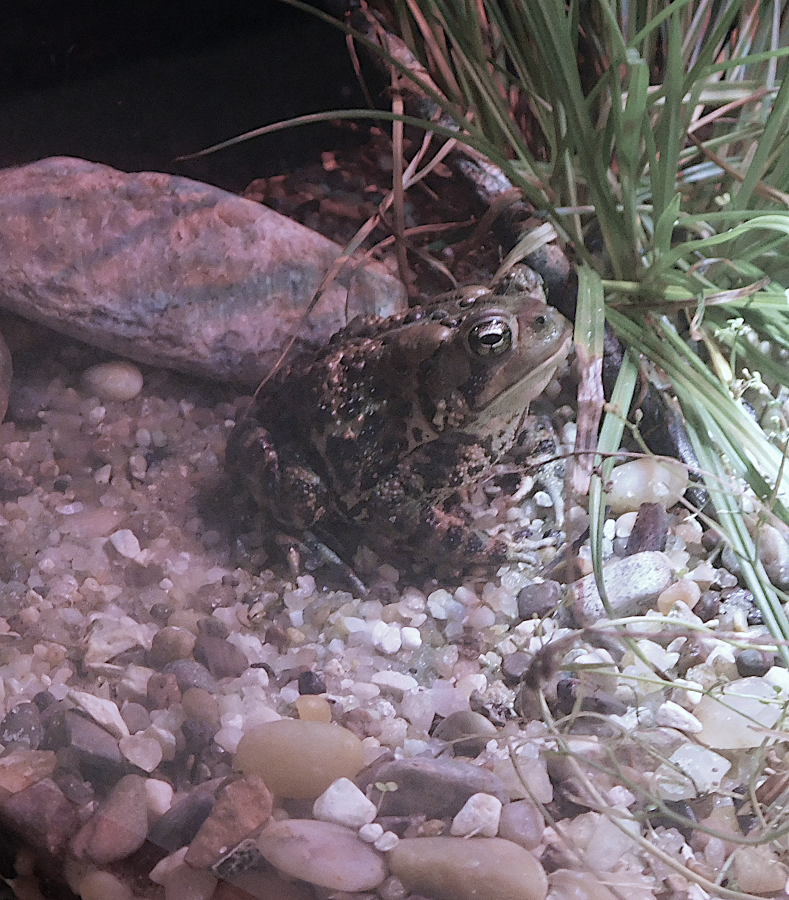
The American toad is one animal you certainly do not want to touch. This toad emits a milky toxic substance from its warty skin if it feels threatened. This substance is toxic enough to kill a fish, if the fish makes the mistake of eating the toad. An adult American toad has enough milky ooze to kill a large dog, if the dog happens to eat it. (Info from
Hummingbirdsplus.org)
I missed many, many species in my tour of this live amphibian and reptile collection, but I still saw a great many interesting creatures inside, and creatures outside the exhibit. I'll move outside to the breeding pools now.
The expressed purpose of the hatchery is to breed trout and to be a resource for people who want to stock their trout ponds. There were many ponds on the hatchery grounds, and most of these were teeming with fish. I wasn't quite sure which were the breeding ponds, hatching ponds, etc. As I explained earlier, I had to leave before I was ready to leave so there are unanswered questions. Here though are some things I know.
There was a sign over one of the ponds that explained the kinds of fish that might be in that pond. This was a warm water pond. To my eye, there was only one kind of fish in that pond: a trout. Many trout.
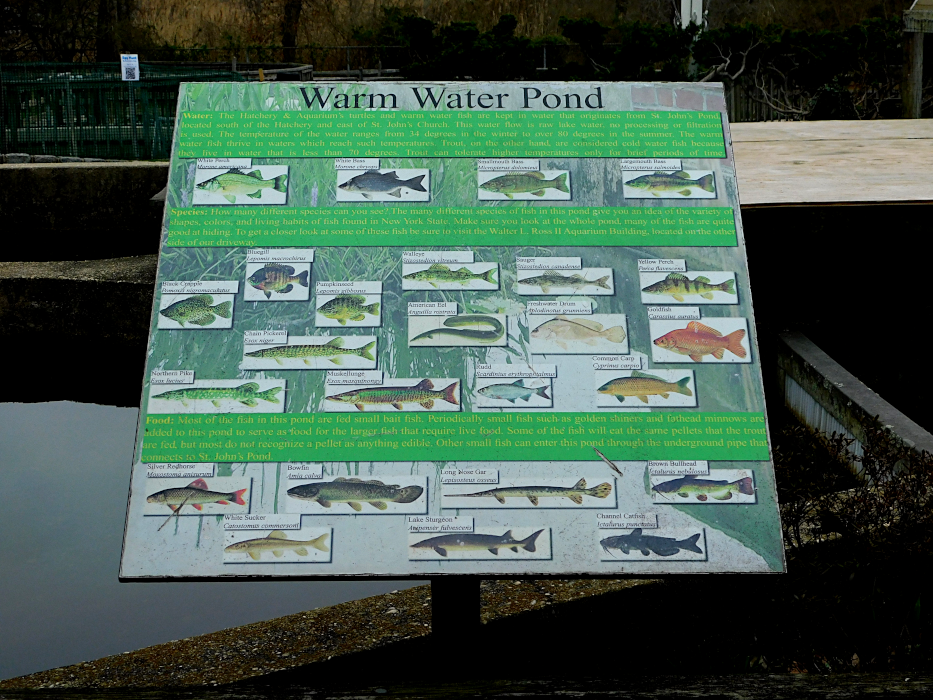
Here is a big fellow that was hugging the shadows. Another fish, a large fish that seemed to be darker in color, swam toward the first fish. You can see the second fish approaching in the picture below. At one point there was definitely deliberate physical contact between two fish. This was not aggressive. The fish on the left does not move as the second fish approaches.
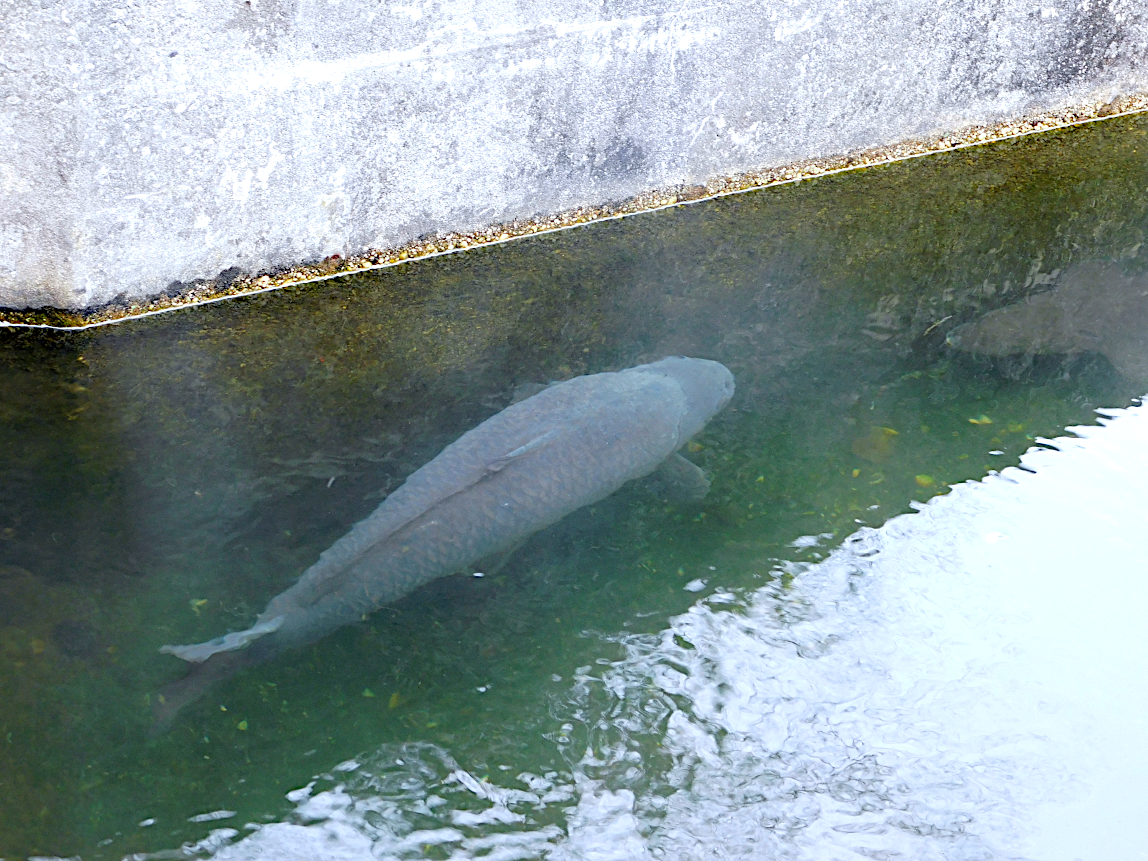
The second fish very slowly and gently swims under the first fish. They make contact for a few seconds, and then they gently separate as the second fish swims away. You can see them making contact in the picture below.
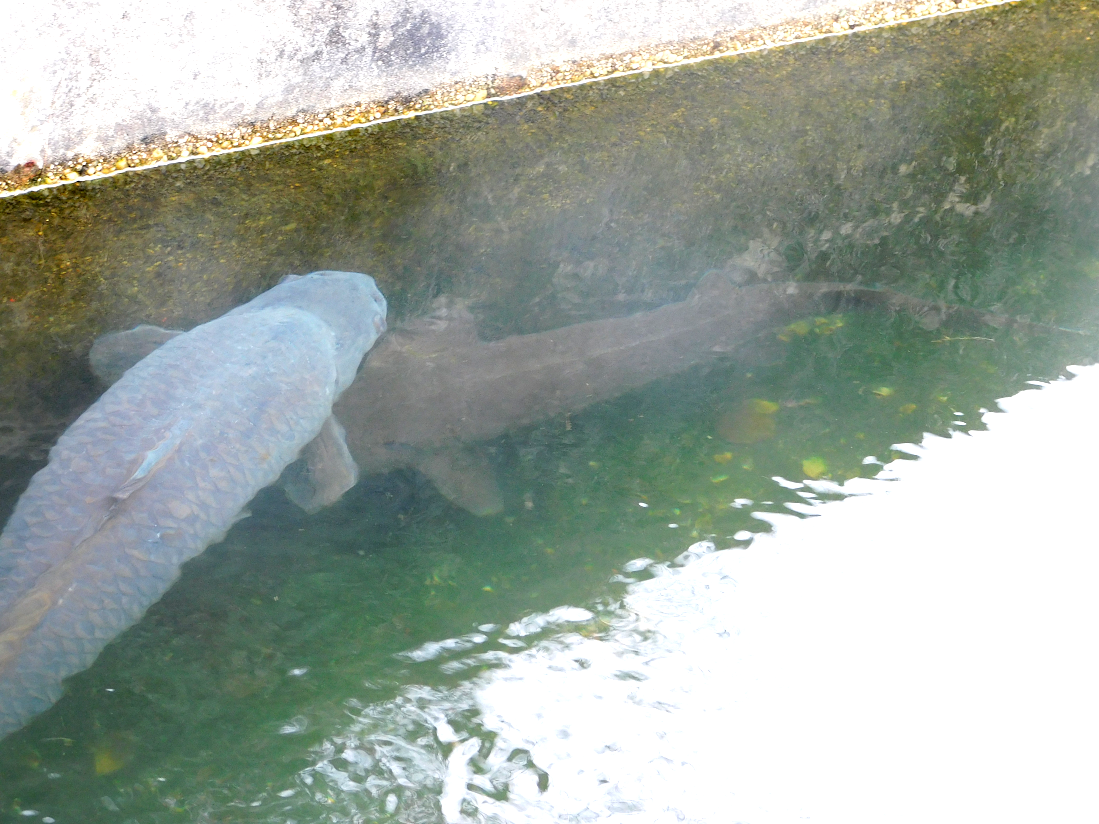
Here you see them separated and swimming away from each other.
I looked on
Google to see if there was an explanation for this behavior. The only response I got was from AI and that response was this: "Trout touch each other for various reasons, including social interactions, mating rituals, and physical contact during spawning or competition for resources." These fish weren't competing for resources, because resources were plentiful in the pond. So the contact was either social or part of a mating process.
Here is a picture of one of the fish ponds--some were circular and some were rectangular--where fish were kept.
Here is picture of what it looked like inside that pool. You can see that there are thousands of fish swimming around. It was hard to get a shot, but I think you can see the swirling water from the fishes' constant motion.
Here are two ponds next to each other. The distant pond is for turtles.
Here is a shot of the turtle pond up close, with a turtle sticking its nose out of the water. This was a rather large turtle and as I moved in for a shot it retreated under water.
Here the turtle is, pulling its nose in. Eventually the animals was completely submerged.
While the stated purpose of the hatchery is to breed fish and to stock trout ponds, there are other things going on at the hatchery. There are educational programs. People can have events there. People can lunch there. And, people can fish.
Yes, some of these trout are destined for a special fishing pond. Members of the public pay a fee to come and fish. No 'catch and release' allowed. If you catch a fish, you keep that fish. People can bring their own equipment or they can rent equipment.
Poor fish. They are destined to be prey in a trout pond or fished out of the fishing pond.
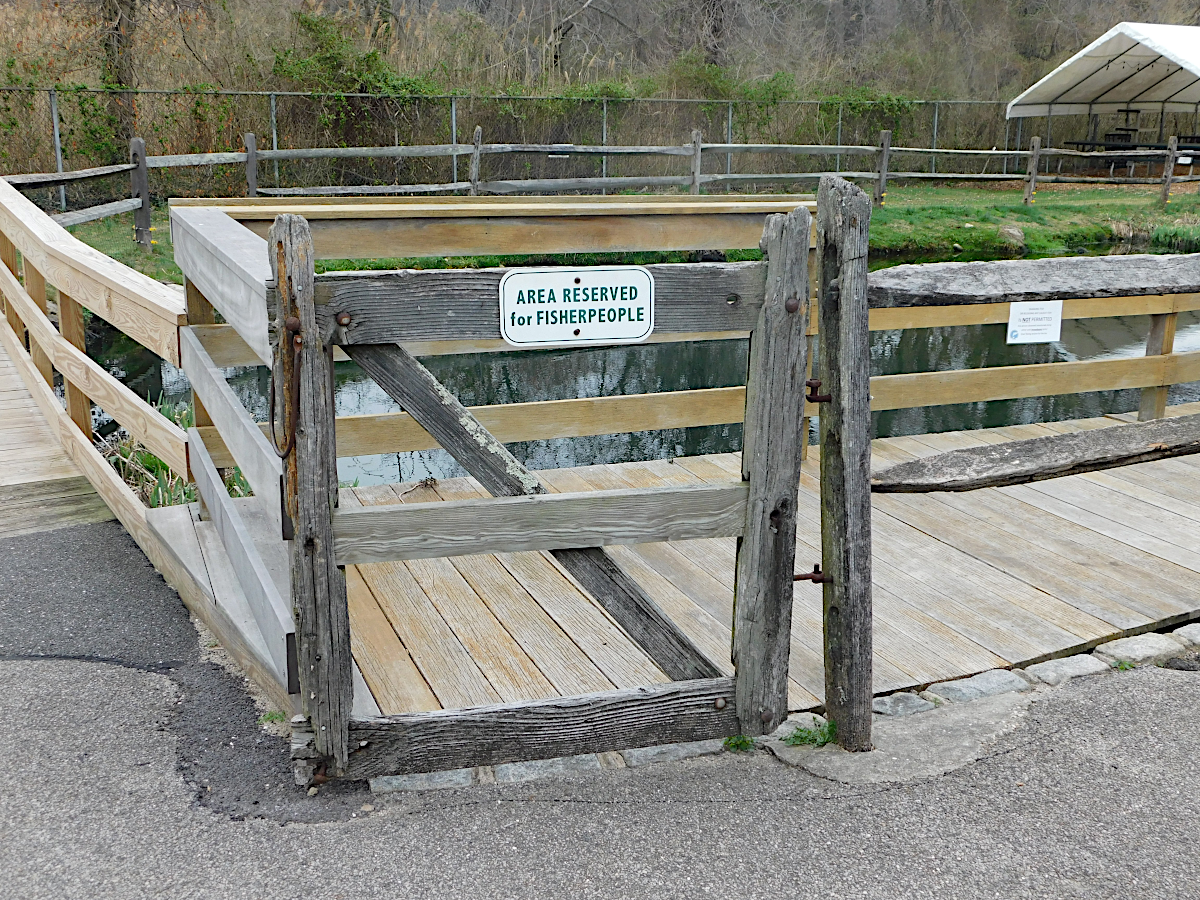
I don't think the turtles are destined for anyone's plate. There were logs laid out for the turtles to sun themselves. We saw a few underwater, but since the sun was not evident, they were not on the sunning logs. There was one artificial turtle, but it didn't fool us.
Here are some picnic tables, where people can snack and relax.
There is also a tented area where people can arrange to have events. The fishing pond is on the right. I don't imagine it's for fishing parties. That would be rather grim (fish and eat ?)
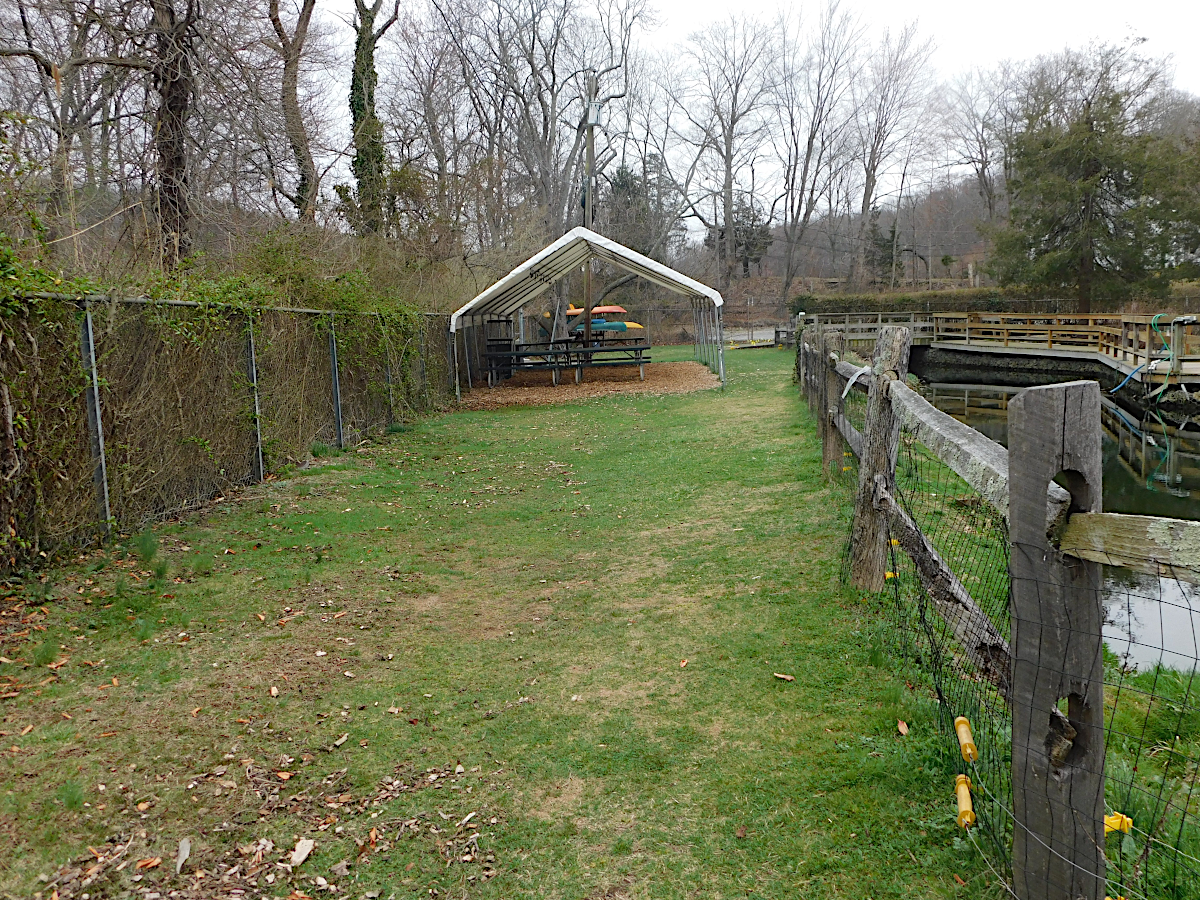
All pictures were taken by me, except the one from 1895. That one is credited to Wikimedia Commons in the post.
Hope you enjoyed this little excursion. I am certain there will be a Part II. There is so much I missed on my first trip.
Thank you for reading. Health and peace to all.

